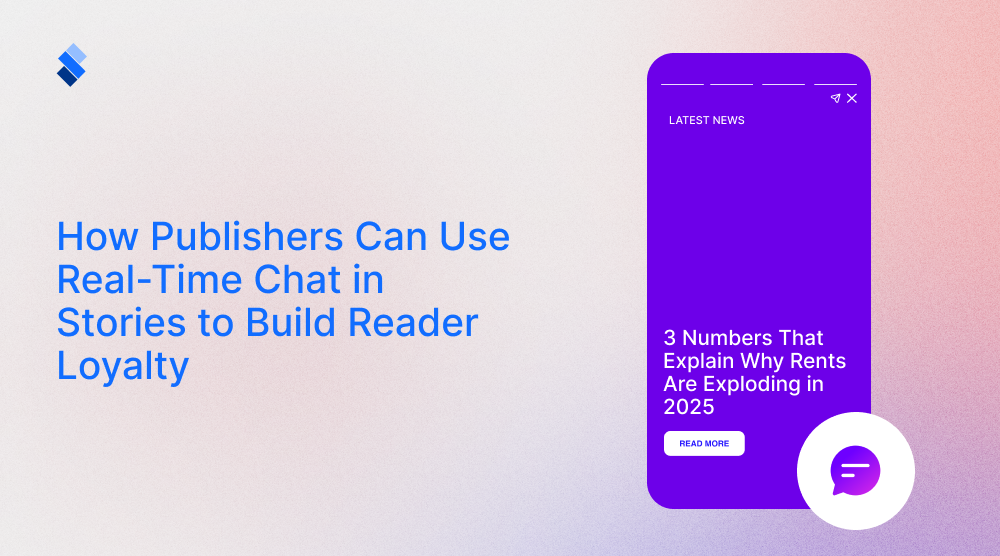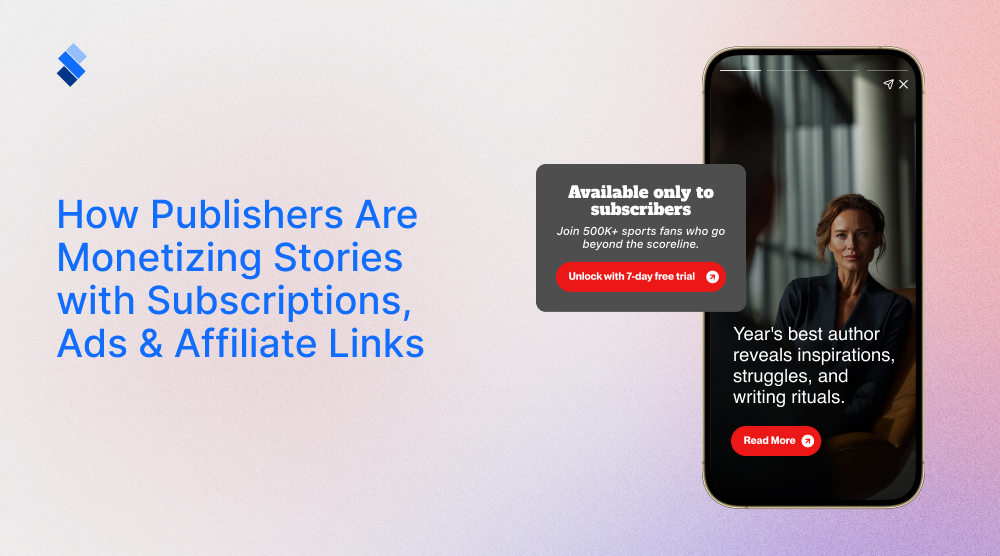10 audience engagement innovations for news and media
In order to properly manage modern content it is important to understand the biggest engagement innovations for news and media.

The news and media industry has come a long way from selling morning and newspapers on the corner stand. In the past hundred years, we've had innovations such as Television, the Internet, live broadcasting, and Social media. All these have had a drastic impact on how we perceive news and how we engage with them. With this in mind, one can't help but wonder about the more modern engagement innovations for news and media. Well, let's take a closer look.
The newest innovations in audience engagement for news and media organizations
It has long been established that for a news and media organization to succeed it needs to do more than simply post content. Engaging with viewers and readers has become the industry norm, and recent years have only brought further innovations and expectations on that front. So, while the following can serve as a quick look back into the media industry, it will also help you understand the current media landscape and how you, as a publisher, can best navigate it.
AI-Generated content
Let's start off with the largest technological innovation of the modern age, the use of AI. While this was science fiction just a couple of decades ago, AI has slowly become an essential tool in publishing. Some publishers rely heavily on AI to generate and optimize content for them. Other, more responsible publishers, realize the dangers of relying too heavily on AI and opt to use it as a tool in their everyday work. An example of this is using AI tools to create concise news summaries, thus making it easier for users to digest information quickly. Or, you can get AI-powered voice assistants or avatars that read out the news for users who prefer audio or video formats.

There are also ways to use AI to generate visual content that properly reflects what you've written or said. But, again, we would advise that you not rely solely on it. Instead, have your visual designers use it as a way to enhance their work.
Personalization and interactive storytelling
Besides content generation, AI has made it possible for smaller companies to analyze large data. This has not only enabled these smaller publishers to better orient their marketing but has also enabled them to personalize their content. By leveraging AI and machine learning publishers can deliver personalized news based on readers' preferences, location, and behaviors. This makes their content far more engaging, as it actually resonates with the reader.
Another, surprisingly clever way in which publishers have used AI is to enable readers to do their own research. While reading up on the websites, readers can influence the presented narrative by selecting different paths or choices within a story. Thus, readers can have their own choice in what news they read, and in which order they read it.
AI-moderated comment sections
One of the best audience engagement strategies is to convince your audience to discuss your content. By doing so, they will be far more motivated to further research your content and engage with your brand. The optimal way of doing so is to have a dedicated comment section where registered users can share their thoughts and comments. Unfortunately, one of the downsides of running a comment section is that you have to moderate it. Heated discussion can easily lead to derogatory terms and inappropriate phrases. Add to this the online trolls who simply want a platform where they can trigger people, and you'll soon see why moderation was a full-time job. But, with the help of AI, this has changed.

Nowadays, it is fairly easy to implement AI-driven tools to moderate comment sections, filtering out toxicity and ensuring civil discourse. This makes engaging in conversations around the news more appealing for readers. And it makes it viable for smaller publishers, with a limited budget to run proper comment sections.
AI-powered sentiment analysis and feedback loops
Another aspect where AI has helped tremendously is sentiment analysis. What this entails is using AI tools to analyze user comments, social media reactions, and interactions to gauge audience sentiment in real time. By doing so, news outlets adjust their coverage or tone based on reader emotions and feedback. This ensures that the content you output is far more in line with the prevalent trend among readers. To further enhance this, publishers can implement AI systems that dynamically adjust content delivery. They do this based on user feedback, tailoring not just the topics, but also the depth, tone, or style of reporting to match audience preferences. By combining these two, publishers can ensure that they are never out of touch with their audience.
Blockchain for trust and transparency
Trust and transparency are some of the major issues that worry modern audiences. Namely, in the modern era of fake news, AI-generated images, and an overabundance of information, it can be hard to decipher what is true and what isn't. Well, modern problems require modern solutions. This is why we have blockchain-powered platforms that verify the authenticity of news sources and articles. This helps tremendously in ensuring transparency and reducing the spread of fake news. Journalists are also expected to have verifiable journalist identities and the provenance of information stored on the blockchain to enhance audience trust. Some readers, unfortunately, don't care much about the truth. But those who do value these extra steps in trust and transparency.
Augmented reality (AR) and Virtual reality (VR)
While this is not as widespread or as fast-growing technology as AI, it is still worth mentioning. Namely, certain publishers have looked for novel ways to make their content more immersive. To that end, they've started using AR and VR to bring users into the scene of a story, allowing them to explore environments like war zones, natural disasters, or cultural landmarks in 3D. Unfortunately, AR and VR technology isn't as popular, which makes this digital audience interaction a bit of a niche. A way to bridge this was by integrating AR features in news apps to let users see the physical locations or important visuals relevant to a story through their smartphone. But even this hasn't really become that much popular.

Community-driven content
What has become popular is user-generated journalism. While not as trustworthy or verifiable as standard journalism, this type of journalism does provide responsivity and update speed that regular journalism couldn't hope for. As the name suggests, it entails allowing audience members to submit their own content, photos, or eyewitness reports on major news events, with newsrooms curating the best contributions. Another step is to enable users to collaborate with journalists in fact-checking stories and content. This makes the audience part of the verification process. While this is a slowly growing trend, there is every suggestion that it will become more prevalent as time goes by.
Social media integrations and engagement
For a news portal to survive in the modern day and age it is necessary to follow social media trends and integrate your content with them. Scrolling through social media has become a favorite pastime for most people, where the average American spends 2 hours and 23 minutes per day. One way to engage viewers while they are on social media is with live Q&A with journalists. By hosting real-time interactions on Instagram Live, Twitter Spaces, or TikTok publishers can effectively engage with audiences around major news events. Another common social media integration strategy is creating news campaigns that encourage audience participation via hashtags thus generating discussion and sharing user insights.
Podcasts and audio news
Podcasts are another form of news coverage that has slowly but surely expanded over the years. While before we essentially only had Joe Rogan, the modern podcast landscape is filled with publishers, hosts, and celebrities.

Many publishers noticed that a great way to engage with your audience is to host snackable, daily podcasts focused on specific themes like politics, business, or local issues to keep users informed during their commutes or downtime. The fact that people listen to podcasts while doing something else (driving or cleaning for example) puts them in an interesting position. By leveraging smart speakers like Amazon Alexa and Google Home for voice-driven news delivery, publishers can offer hands-free access to the latest updates. Publishers that choose to manage their Voice SEO see a definite spike in their listener base. This is a clear example where keeping up with the modern needs of our audience pays off.
Gamification and quizzes
The last of the news publisher engagement tactics we will mention is the use of quizzes, polls, and trivia to engage users while they consume news stories. This not only educates but also retains their attention, as they are motivated to interact with your content. If you add a bit of gamification to this, it is fairly easy to have a unique platform that engaged readers can enjoy. Now, of course, not all readers enjoy an interactive approach to their news. But those that do, truly appreciate the extra effort. By offering interactive quizzes related to current events or broader subjects publishers encourage learning and a deeper understanding of the news.
Final thoughts
What we've outlined so far are the key aspects of modern engagement innovations for news and media. It is important to mention that we live in an age of rapid change, especially when it comes to IT, media, and AI. Therefore, we would advise you to take our article as a starter for your further research. Before long we will likely see substantial changes that may drastically alter the media and publishing industry. And if you, as a publisher, wish to stay afloat we would strongly advise that you keep up with modern trends and that you alter your content and marketing as need be.







